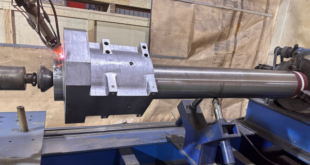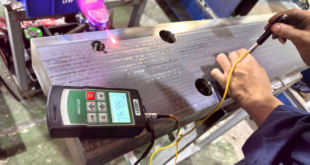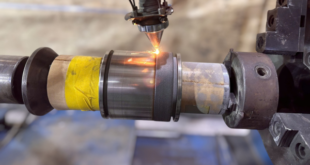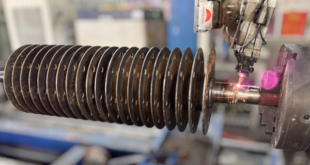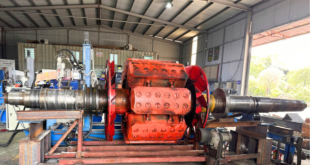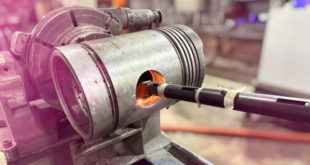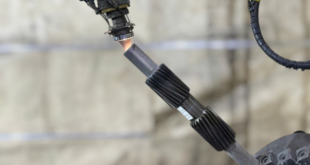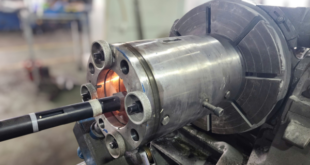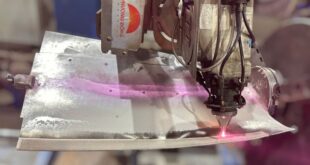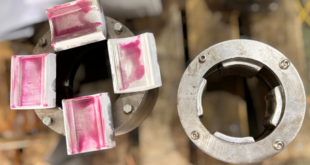1. Why Use Laser Cladding for Plastic Extrusion Cylinders? During continuous operation, plastic extrusion cylinders are exposed to high temperatures, intense pressure, and constant friction with the screw and molten material. Over time, the cylinder surface becomes worn, scratched, or corroded, leading to: Reduced product quality Increased energy consumption Leakage ...
Read More »Service
Laser Hardening for Slide Bars – The Leading Surface Hardening Solution Today
1. Laser Hardening – The Most Advanced Heat Treatment Solution Today Laser Hardening is currently the most advanced surface heat treatment technology. It uses a highly controlled laser beam to heat specific areas on a component’s surface with exceptional precision. This technology is especially ideal for parts that require high ...
Read More »Laser Cladding Repair for Piston Rods
Laser Cladding is an advanced surface restoration and strengthening technology. It utilizes a high-energy, focused laser beam to melt metallic powder and fuse it with the base material surface. This process creates a dense, wear-resistant coating with excellent bonding and mechanical properties. Laser cladding is especially suitable for components subject ...
Read More »Rotor Repair for Swing Hammer Crushers Using Laser Cladding Technology
The rotor of a swing hammer crusher is subjected to severe wear and impact during the crushing of hard materials such as stone, clinker, slag, and ore. Over time, the hammer heads, throw arms, and rotor surfaces wear unevenly, leading to decreased crushing efficiency, rotor imbalance, and excessive vibration that ...
Read More »Hydro Generator Rotor Repair Using Laser Cladding
Why is rotor repair necessary? The rotor is the central rotating component of a hydro generator, operating under heavy load and in harsh conditions. Over time, it often experiences: Surface wear at bearing or journal areas Cracks, pitting, or scratches due to friction and temperature Dimensional deviations affecting dynamic balance ...
Read More »Laser Cladding Repair for Aluminum Piston Heads Using Aluminum Powder
Piston heads made from aluminum alloy are widely used in automotive engines, compressors, and industrial equipment due to their lightweight, high thermal conductivity, and excellent heat resistance. However, during operation, piston heads are prone to wear, cracks, and deformation, which can negatively impact engine performance. PHUONGDONG INDUSTRY offers a high-precision ...
Read More »Laser Cladding for Restoring Inner Bore of Gear Shaft Ø30mm
Laser cladding for inner bore repair of gear shafts (Ø30mm) is an optimal solution to restore worn, cracked, or deformed surfaces caused by industrial operation. At PHUONGDONG INDUSTRY, we apply advanced laser cladding technology to precisely restore the inner bore of gear shafts. The process creates a high-hardness alloy layer ...
Read More »Internal Cylinder Bore Repair Using Laser Cladding Technology
Laser Cladding is increasingly used in the repair and surface enhancement of industrial components. For hollow parts such as cylinder bores, internal surface restoration presents a number of technical challenges due to space limitations and a high risk of thermal distortion, cracking, and coating delamination. Challenges in Internal Surface Cladding ...
Read More »Laser Cladding Repair for Fan Blades – Effective Repair Without Distortion
Fan blades in turbines, compressors, and industrial ventilation systems operate in harsh environments, constantly exposed to high temperatures, dust, and corrosive gases. Over time, this causes significant erosion and corrosion on the blade surface. These components are often thin and delicate, making them highly vulnerable to warping or distortion during ...
Read More »Laser Cladding with Tin-Based Babbitt Powder – The Optimal Solution for Bearing Repair
1. Technology Overview Laser cladding with tin-based Babbitt alloy powder is an advanced surface coating technique that restores worn mechanical components such as journal bearings, bushings, and shaft supports. A high-power laser beam melts the Babbitt powder and fuses it metallurgically with the base material, forming a durable and uniform ...
Read More »
 Laser Cladding Phương Đông
Laser Cladding Phương Đông
